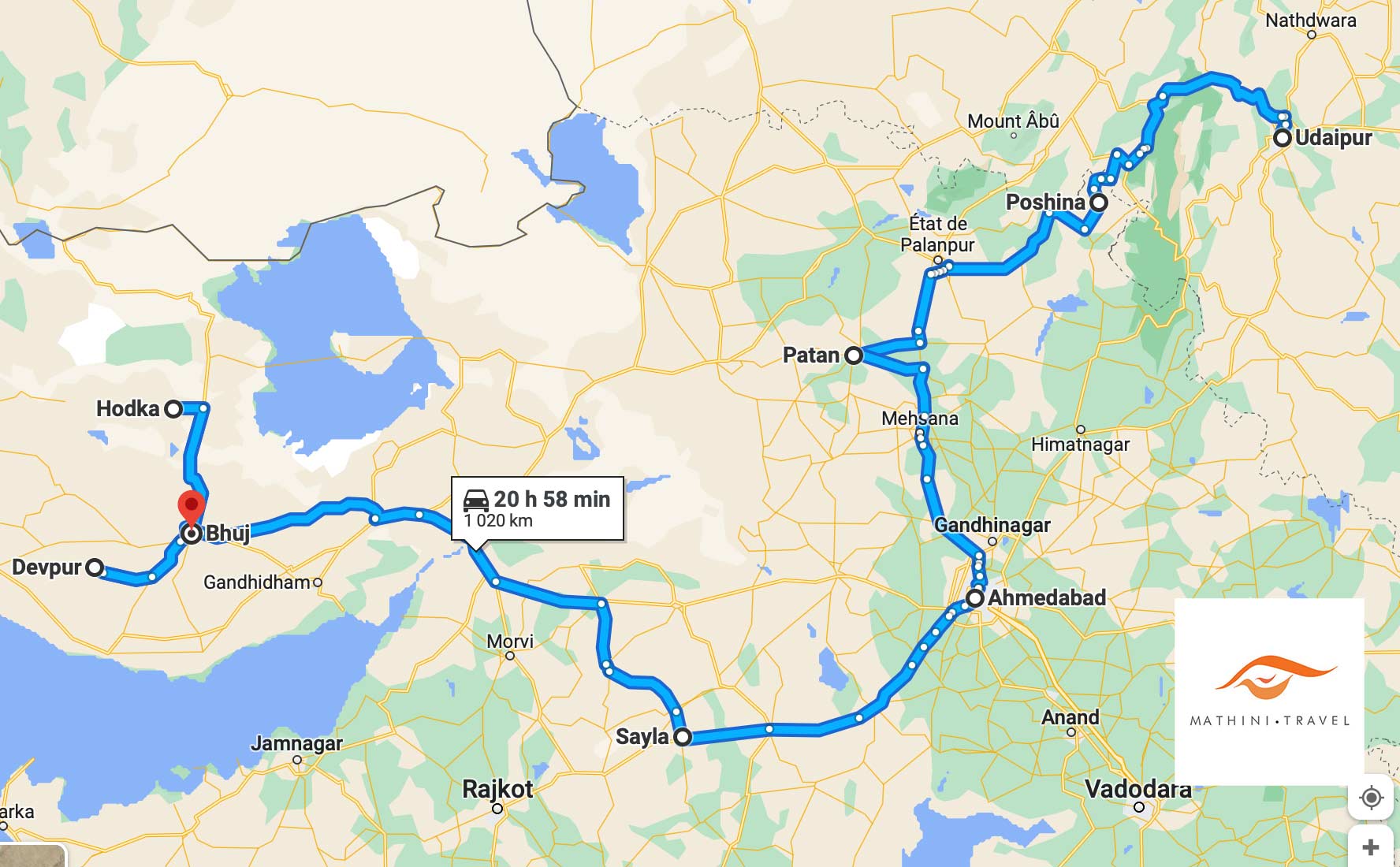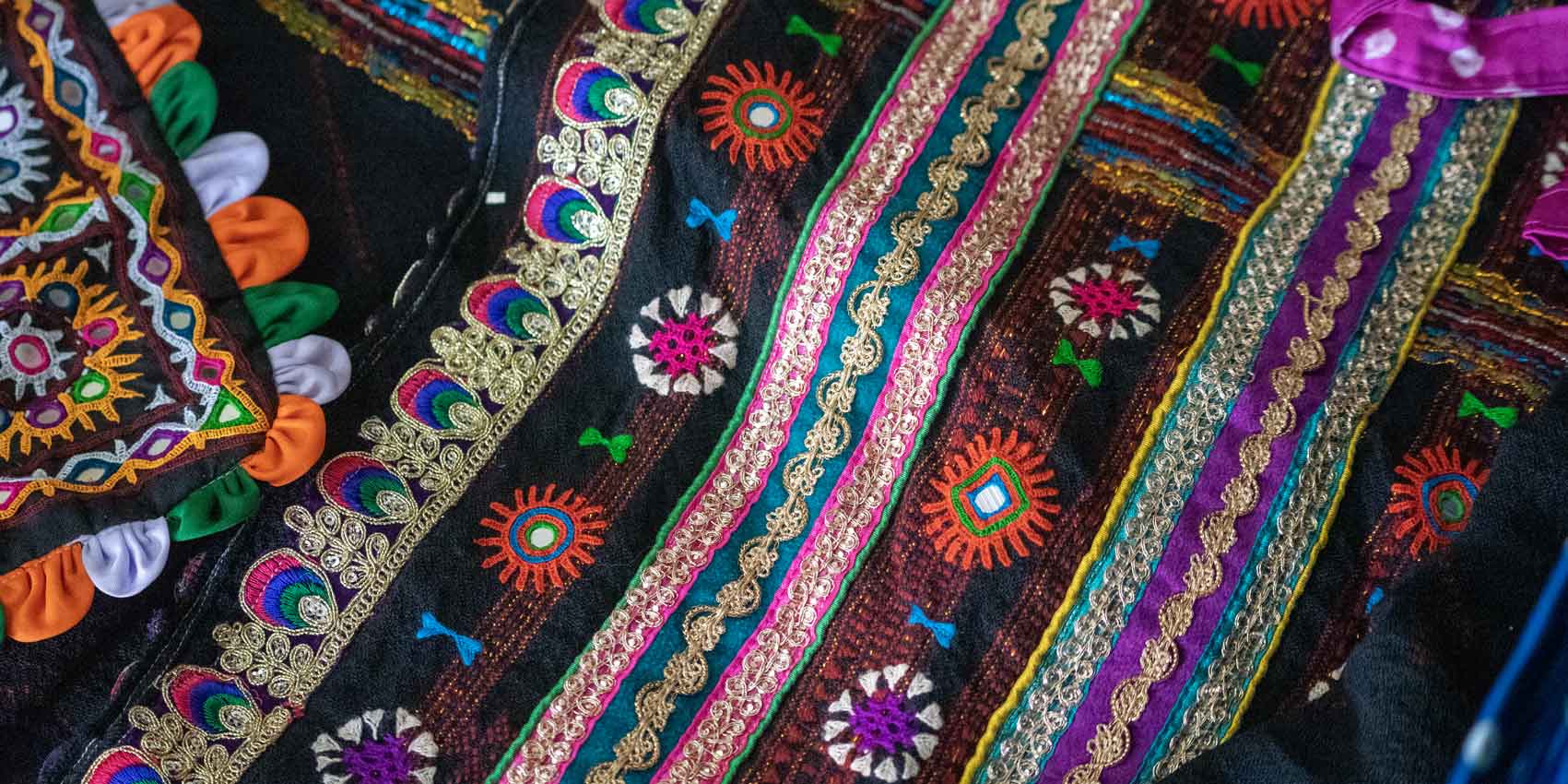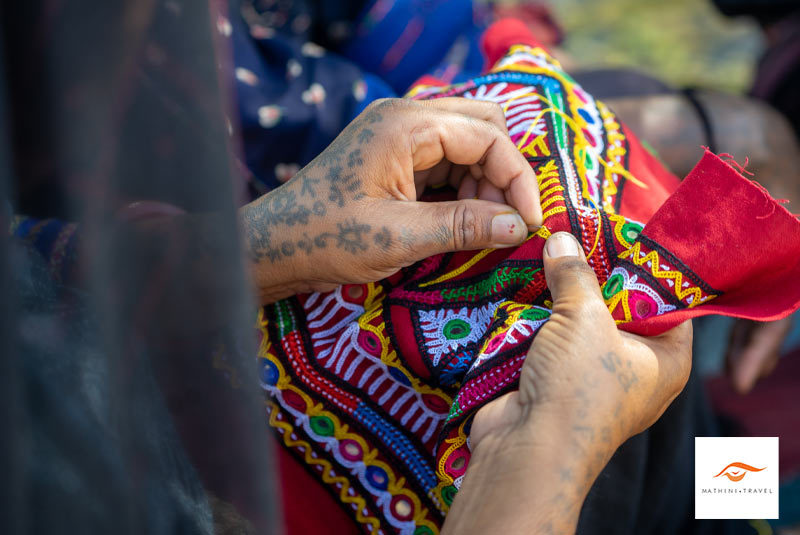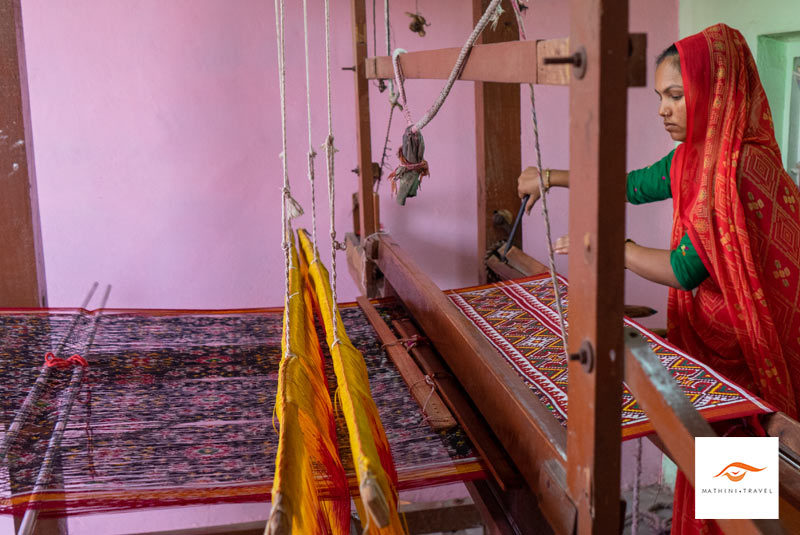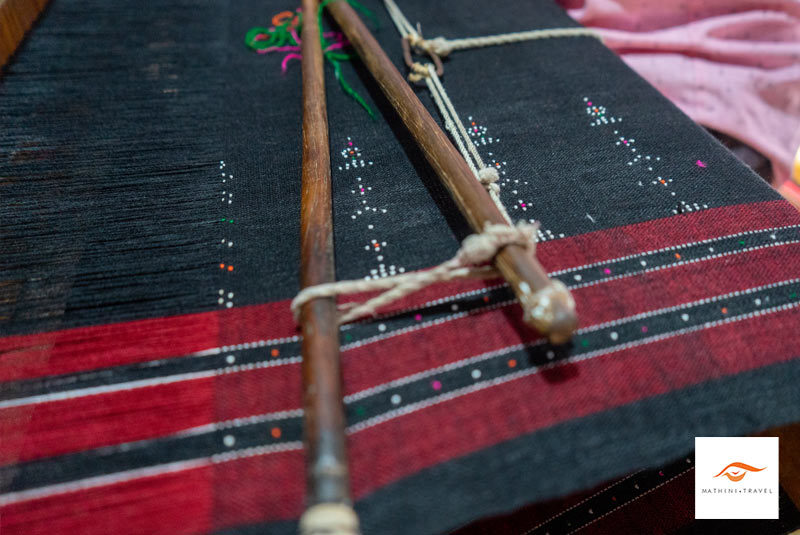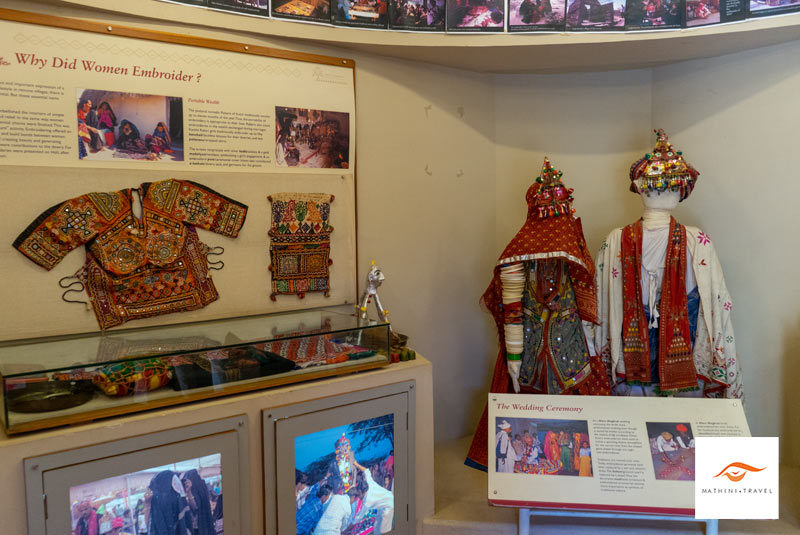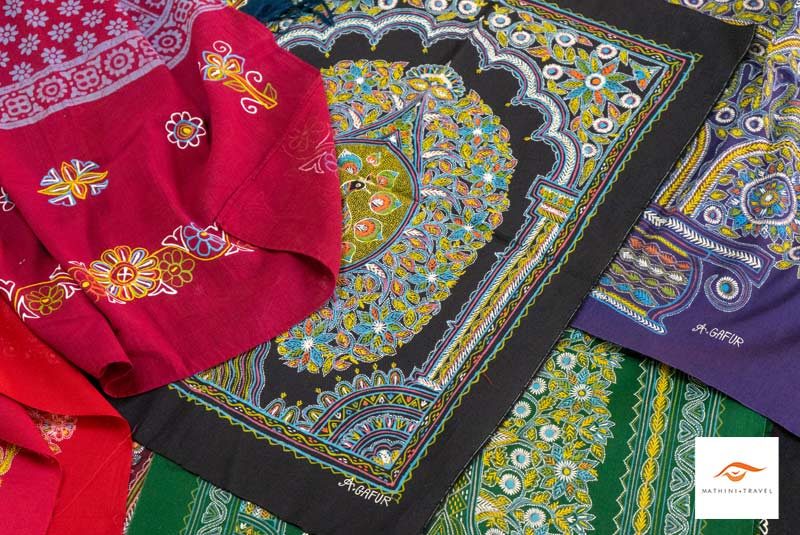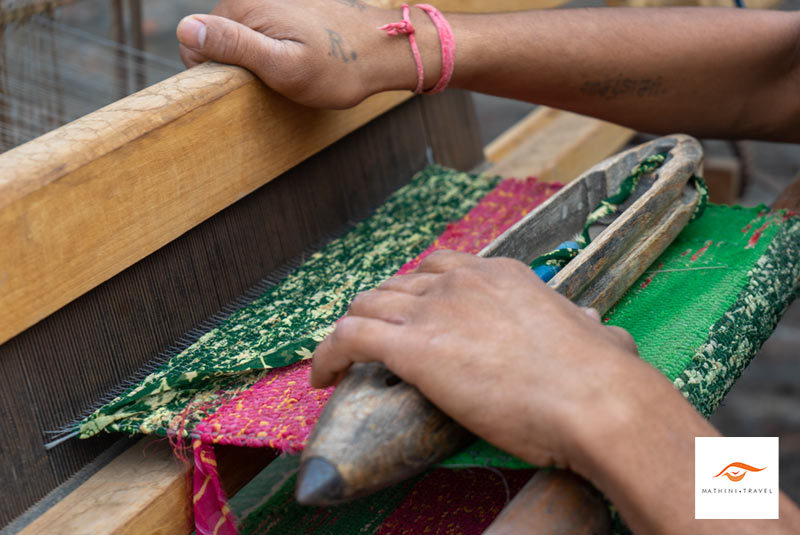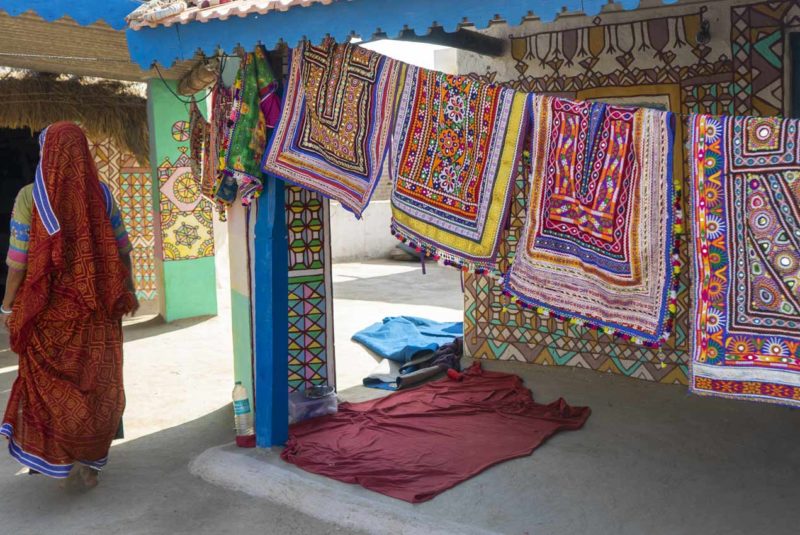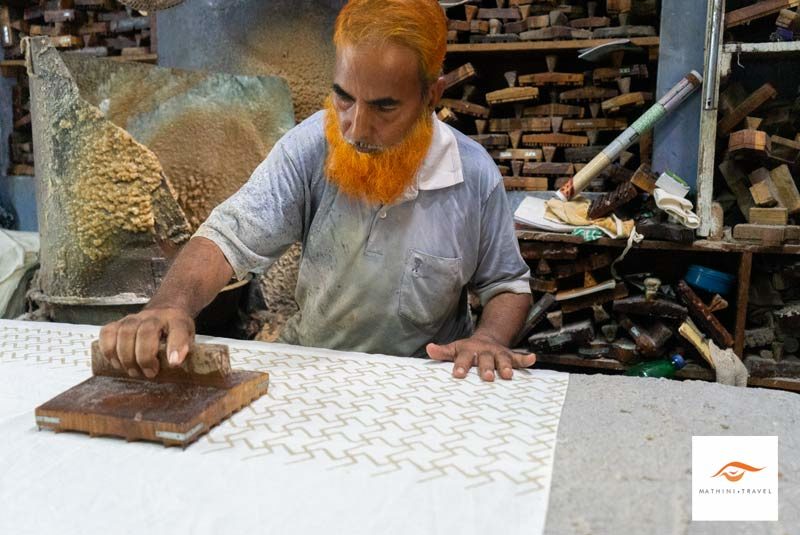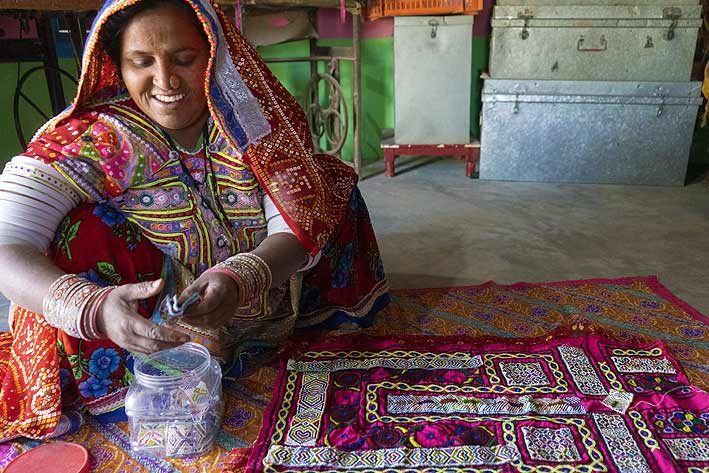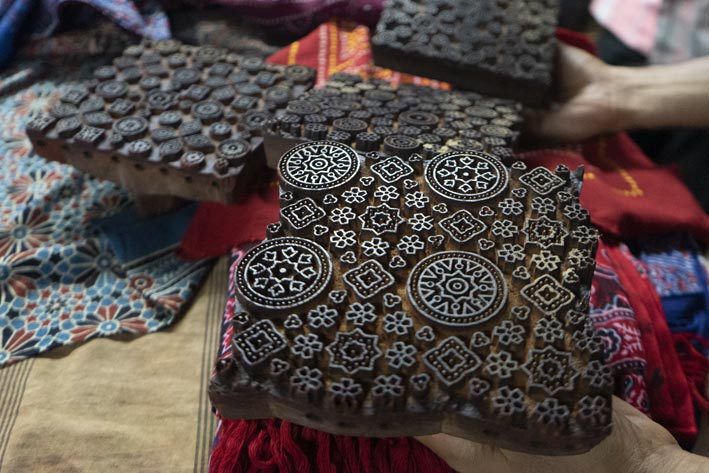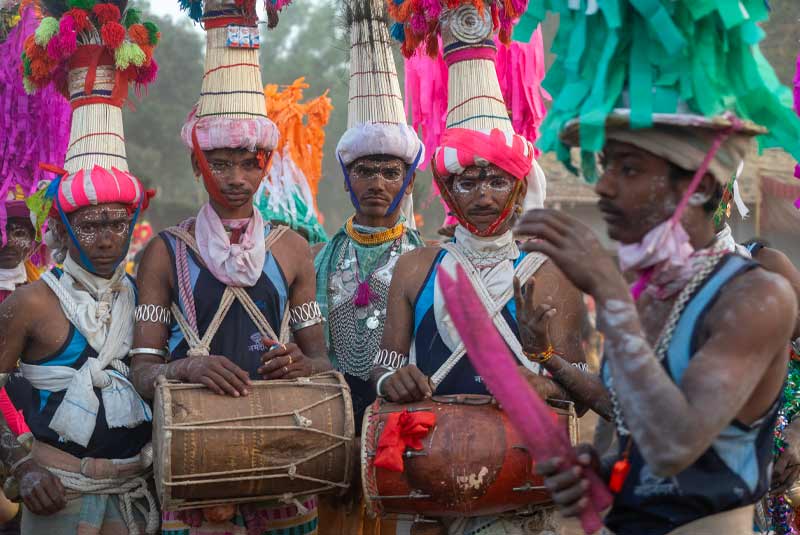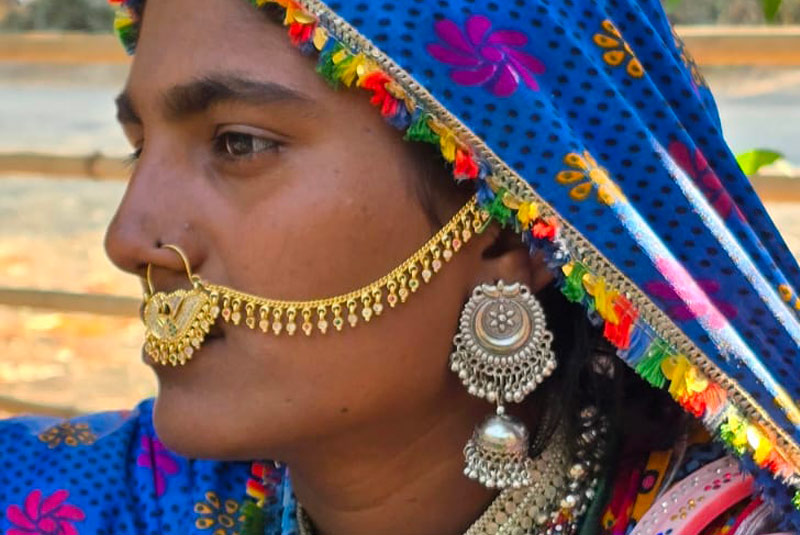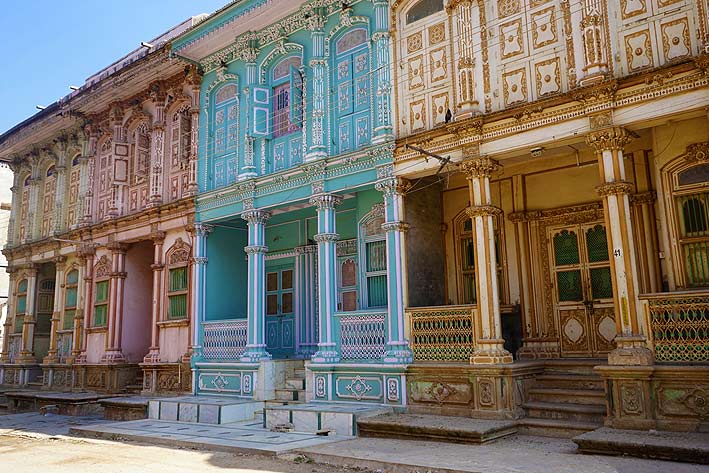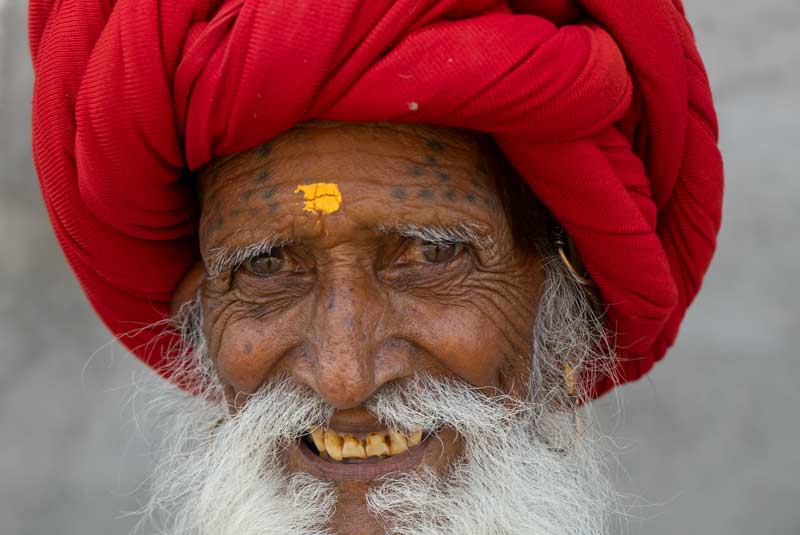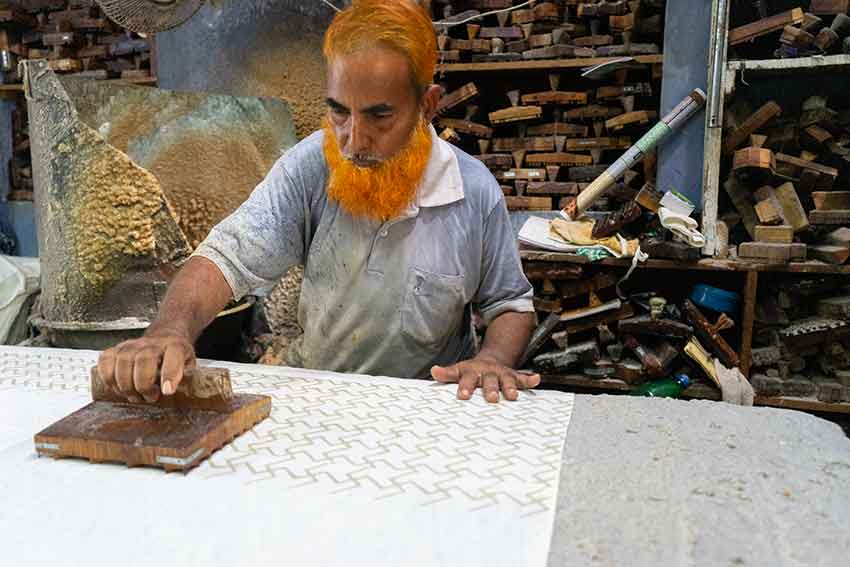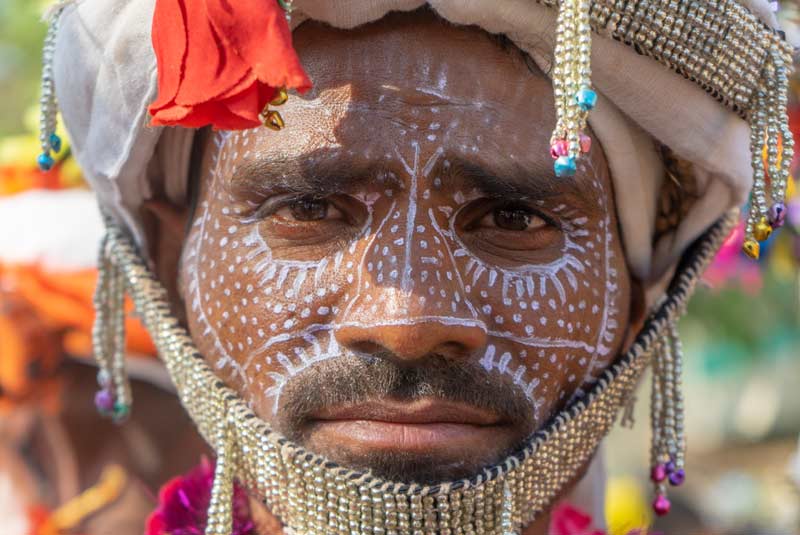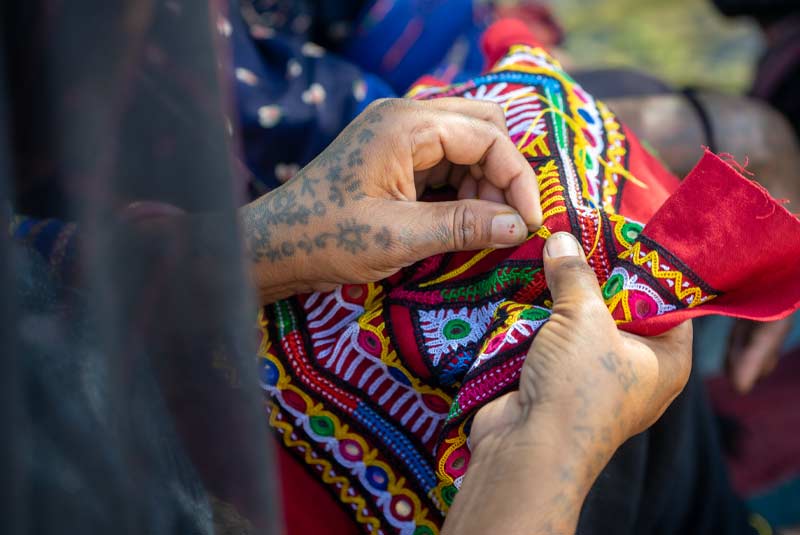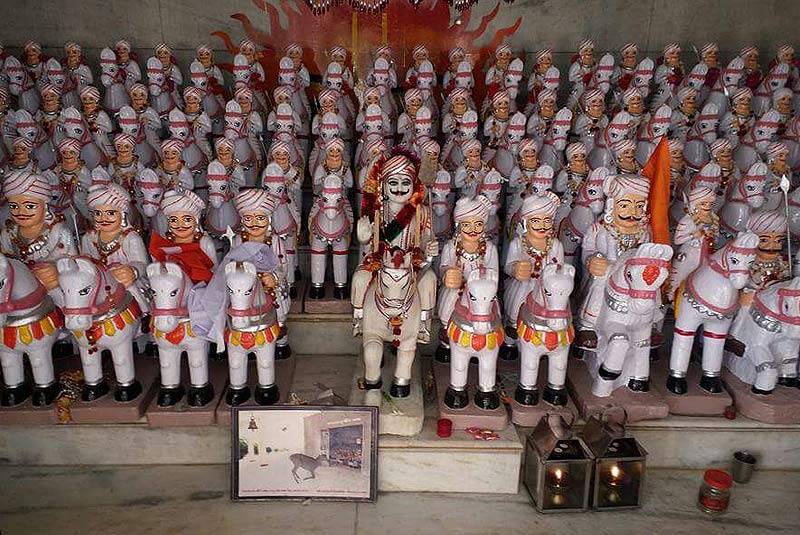Textile Art journey in Gujarat
A 14-day immersion in Gujarat’s rich textile traditions, combined with a discovery of its impressive architectural heritage.
Your adventure begins in Ahmedabad, a UNESCO World Heritage Site. You’ll explore its labyrinthine streets and historic monuments in the old town, before visiting the renowned Calico Museum. This museum is a world-renowned landmark for its remarkable collection of textile arts, offering unparalleled insight into the history and diversity of Indian fabrics.
In Ahmedabad, you’ll also meet artists of Mata ni Pachedi art, sacred canvases dedicated to Shakti.
The journey continues to Chhota Udepur, a region where you will be welcomed by the indigenous Rathwa community. You will visit their Adivasi (tribal) center, which works to perpetuate the Kasota tradition, among other things.
Then head to Muli, a town renowned for its many weavers. There, you will discover the demanding technique of Tangaliya, a complex weaving technique that creates raised patterns by adding cotton beads.
The highlight of your tour will take you to the Kutch district, a true melting pot of ancestral craftsmanship. You will meet diverse artisan communities, each with their own specialties:
- Rabari, Ahir, and Meghwal embroiderers, whose intricate designs tell the story of their cultures.
- Kala cotton weavers
- Nirona artisans, famous for their “Rogan Art”
- Ajrakh and Batik masters, who use woodblock printing techniques
NOTE: We can include hands-on workshops for each textile art mentioned.
Who is this trip for?
Ideal tour for lovers of Indian arts and crafts.
When to go?
From October to March
The price indicated above is an estimate. As we only offer tailor-made services, this budget depends on several factors (choice of services, number of people, type of car, time of year, inflation, etc.); the final price is that of your personalized (free) quote obtained after an in-depth discussion with you.
THIS TRIP INCLUDES:
- Double occupancy accommodation in a charming 3-star hotel
- Breakfast
- All transportation by Innova Crysta car with private driver (all expenses included)
- Interstate taxes
- All airport-hotel transfers
- 24/7 concierge service,we are in constant contact with you.
THE TRIP PRICE DOES NOT INCLUDE:
- International flights
- Domestic flights
- Visa fees
- Travel insurance (mandatory)
- Meals other than those listed in “included.”
- Any arrangements not included in the program that result in additional costs
- Any personal expenses.
- Tips.
- Anything not listed in “included.”
You may also like...
Arrival in Ahmedabad
Ahmedabad Old Town & Visit of a Mata ni Pachedi Workshop
*
With your guide, you will explore its charming Pols (traditional neighborhoods), admire the magnificent carved wooden havelis, discover the ancient chabutras (bird feeders), and visit architectural gems such as the Jama Masjid Mosque and the Swaminarayan Kalupur Temple.*
Breakfast break at the hotel*
Then, visit a Mata Ni Pachedi workshop, which resembles the Kalamkari of Andhra Pradesh. The story goes that when the nomadic Vaghari community of Gujarat who worship Mata were not allowed to enter temples, they instead created their own places of worship with illustrations of the Mother Goddess (Mata) on pieces of cloth.Ahmedabad Calico Museum > Jambughoda (4 h)
*
En route, you will visit Champaner, a UNESCO World Heritage Site, which offers a fascinating glimpse of an ancient capital, with its mosques, temples, and fortifications. Then, visit Pavagadh Hill, a major pilgrimage site with its temple dedicated to Kalika Mata.*
Check-in at your boutique hotel.Chhota Udepur, tribal culture (1 h)
*
Return to JambughodaJambughoda > Sayla (4 h)
*
You will stay in a historic guesthouse still run by the Sayla royal family. Break, then visit Sayla's rich heritage: its Kashivishwanath and Lalji Maharaj temples, as well as its ancient palace, still used by the Sayla royal family. We will also stroll through the winding streets of the city, whose old carved wooden mansions tell us much about its glorious past.Sayla Tangaliya weaving workshops
*
Tangaliya is a 700-year-old traditional hand-weaving technique developed by the Dangasia community. It's a painstaking process: pieces of yarn are wrapped around a group of four to five warp threads, creating a beaded effect. The result is a sublime geometric design, with tiny dots illuminating the stark textures.*
Overnight in SaylaBandhani workshop > Bhuj (5 h)
*
After lunch, head to Bhuj, the capital of the Kutch district, a region extremely rich in textile arts. Overnight stay in an old Parsi mansion.Visit to Rabari & Ahir Embroidery and Kala Weaving Workshop around Bhuj
*
We will travel about twenty kilometers from Bhuj to discover the workshops of the Rabari Dhebaria women.*
Rabari embroidery is characterized by chain stitches and generous use of mirrors. The women depict the world around them without the aid of sketches or patterns. The only materials used are a simple needle and thread.*
We will then take a tour of the nearby Rabari village to meet its friendly inhabitants.*
We will then explore Ahir embroidery in another village. Ahir embroidery is one of the most recognizable embroidery styles in Kutch, characterized by a rhythmic row of embroidered motifs, the use of vibrant colors, and mirror work. "Sankli" or chain stitch is used for the outlines and herringbone stitch for the filling, combined with mirror work and beads.*
To finish the day, we will visit the workshop of a Kala cotton weaver. Kala cotton is indigenous to the Kuch region and is organically grown. It is a variety that is resistant to the region's arid climate and disease. This cotton produces a coarse fiber, considered poor quality by the textile industry, which has reduced its use over time. However, the Kala is back in vogue with designs that appeal to modern India.*
Night in BhujVisit to Ajakh and Batik workshops around Bhuj
*
We'll head to Mundra and, along the way, stop at Kera, which houses an ancient 12th-century temple dedicated to Shiva. Although only a few vestiges remain of this sacred site, it's easy to imagine its former splendor.*
Mundra is known for his textile printing using the batik method.Bhuj > Banni
*
En route, we will visit Nirona, known for Rogan, a unique method of painting on fabric. Originating in Persia, it arrived in the village of Nirona about 400 years ago. In Rogan, elaborate designs are created freehand, applying thin lines of paint with a stylus. The paint is made from castor oil (the name "Rogan" means "oil paint"), which is boiled for about two days.*
A few kilometers away, we will visit the small village of Jura, renowned for its artisans from the Lohar community who make copper bells without the need for soldering.*
We will continue our textile arts journey by visiting the Kala Raksha NGO in the village of Sumrasar, which is committed to the preservation of hand embroidery.*
Settling into traditional huts in HodkaBanni
*
Meghwal women are renowned for the art of pakko embroidery, which literally means "solid." Indeed, every inch of the fabric is covered in embroidery. The most common stitch is chain stitch, complemented by mirrors and tassels.*
We will then visit a Mutva embroidery workshop. Mutva embroidery is characterized by very small stitches and equally tiny mirrors. It is a kind of miniature embroidery.*
We will end our day at the Rann of Kutch, one of the largest salt flats in the world, to watch the sunset.*
Overnight in HodkaBanni > Devpur
*
On the way, we will stop at the Hindu monastery of Than Jagir, stronghold of the Kanphata Yogis. The place is enclosed by high walls, like a small fort, and contains several temples.*
Settling into a charming residence in DevparRabari Kasi Embroidery
Devpur > Bhuj
